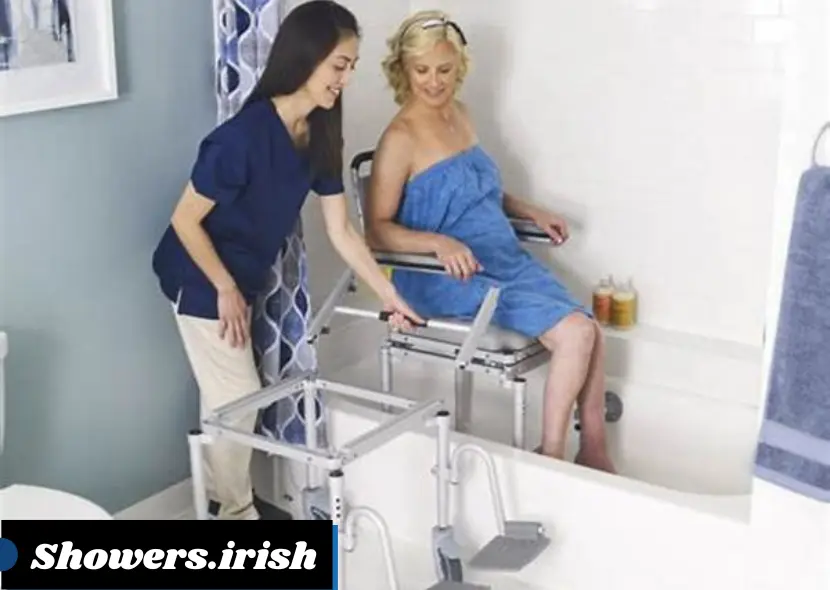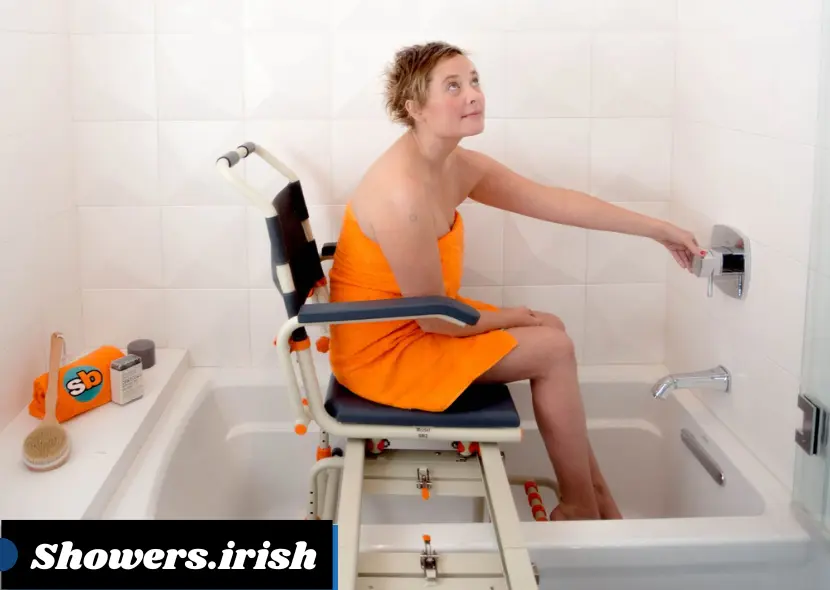Bathing someone in a shower chair is an essential skill for caregivers, ensuring comfort, safety, and hygiene. This guide provides detailed instructions and practical tips to help you navigate this task with confidence.
Preparing for the Bath
Assessing the Individual’s Needs
Before you begin, it’s crucial to understand the specific needs of the person you’re bathing. Consider their mobility, level of comfort, and any medical conditions that might affect the bathing process. A thorough assessment helps you customize the experience to their requirements.
Gathering Necessary Supplies
Having all necessary supplies within reach will make the bathing process smoother. Essential items include:
- Shower Chair: Ensure it is stable, clean, and properly adjusted for height.
- Bathing Supplies: Gather mild soap, shampoo, washcloths, and a bath towel.
- Safety Equipment: Use non-slip mats, grab bars, and any other aids to prevent falls.
Ensuring a Safe Environment
Safety is paramount. Make sure the bathroom is free from hazards such as loose rugs or clutter. Adjust the water temperature to a comfortable and safe level before bringing the person into the shower area.
Positioning and Transferring

Transferring to the Shower Chair
Carefully transfer the person from their wheelchair or other sitting position to the shower chair. Use proper lifting techniques to avoid injury. A transfer belt or slide sheet can aid in this process, providing additional support and reducing friction.
Adjusting the Shower Chair
Once they are seated, adjust the shower chair to ensure it is positioned correctly under the showerhead. The chair should be stable and not wobble. If the chair has armrests and footrests, make sure they are appropriately positioned to offer maximum support.
Securing the Individual
Ensure that the person is securely positioned in the chair. If the chair has safety straps or belts, use them to prevent slipping or sliding. Communicate with the person throughout the process to keep them informed and comfortable.
Bathing Techniques
Wetting and Applying Soap
Start by gently wetting the person’s body using a handheld shower head or a cup. Apply a mild soap or body wash to a washcloth or sponge and start with their upper body. Use gentle, circular motions to clean their skin. Pay attention to areas that may require extra care, such as folds and creases.
Rinsing and Shampooing
Rinse off the soap thoroughly using the shower head or a cup. For shampooing, apply a small amount of shampoo to the person’s hair and gently massage it in. Rinse the hair completely, ensuring that no shampoo residue remains. Be cautious to avoid getting soap or shampoo in their eyes.
Drying and Moisturizing
After the bath, carefully dry the person with a soft towel. Pat their skin dry rather than rubbing to avoid irritation. Apply a moisturizer if needed, especially if their skin is prone to dryness.
Post-Bath Care

Transferring Back to the Original Position
Once the bath is complete, carefully transfer the person back to their wheelchair or bed. Follow the same safety measures used during the initial transfer to prevent any accidents.
Cleaning and Sanitizing Equipment
After the bath, clean and sanitize the shower chair and any other equipment used. This helps prevent the spread of bacteria and ensures the equipment remains in good condition for future use.
Monitoring for Any Issues
Check the person’s skin for any signs of irritation or discomfort. Monitor their overall well-being and address any concerns promptly.
Conclusion
Bathing someone in a shower chair requires careful planning and attention to detail. By following the steps outlined in this guide, you can ensure a safe and comfortable bathing experience.
Recap of Key Points
- Preparation: Assess needs, gather supplies, and ensure a safe environment.
- Positioning: Transfer carefully, adjust the chair, and secure the individual.
- Bathing: Use gentle techniques for wetting, soaping, rinsing, and drying.
- Post-Bath: Transfer back safely, clean equipment, and monitor for issues.
Call to Action
For further reading, consider exploring resources on caregiver training or consult with healthcare professionals to refine your skills. Engaging in ongoing education can enhance your caregiving abilities and improve the overall experience for both you and the person you care for.
Frequently Asked Questions (FAQs)
1. How do I ensure the shower chair is safe for use?
Ensure the shower chair is sturdy, properly adjusted to the person’s height, and has non-slip feet. Check for any signs of wear and tear before each use. If the chair has safety straps or belts, make sure they are functioning correctly.
2. What should I do if the person being bathed is uncomfortable?
Communicate with them regularly to check their comfort levels. Adjust the water temperature, position, or bathing technique as needed. If they express discomfort, stop and address their concerns before continuing.
3. How can I safely transfer someone from their wheelchair to the shower chair?
Use proper lifting techniques and consider using a transfer belt or slide sheet for added support. Ensure both the wheelchair and shower chair are positioned securely before the transfer. Always move slowly and carefully to avoid injury.
4. What are some tips for preventing skin irritation during the bath?
Use mild, hypoallergenic soap and avoid excessive scrubbing. Ensure all soap and shampoo are thoroughly rinsed off to prevent residue buildup. Pat the skin dry gently with a soft towel rather than rubbing.
5. How should I clean and maintain the shower chair?
After each use, clean the chair with a disinfectant to remove any soap residue and bacteria. Regularly inspect the chair for any damage or wear. Ensure all parts, such as footrests and armrests, are securely attached and functioning correctly.
Adapting to Cold Showers: Tips and Tricks
Adjusting to cold showers can be a challenge, but with the right strategies, it can become a refreshing and invigorating experience. Start by gradually lowering the water temperature over several days to allow your body to acclimate. Incorporating deep breathing exercises can help you manage the initial shock of the cold water. Additionally, focusing on the benefits, such as improved circulation and increased energy levels, can make the process more motivating. For detailed guidance on how to adapt to cold showers and make the transition smoother, check out this helpful guide. Whether you’re looking to boost your immune system or just add a new challenge to your routine, this resource offers practical tips to make cold showers more manageable.
Credit Website: www.ireland.ie/
